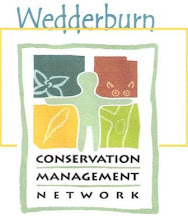
On 4th August 2008 two young malleefowl (one male and one female) were released at Wychitella Nature Conservation Reserve as part of the Wedderburn CMN`s ongoing drive towards conservation of biodiversity.
On arrival at the predetermined release site the birds were fitted with radio transmitters then released together. Birds were initially tracked each day for the first week and were to be tracked 2-3 times per week after the first week until the tracking devices ceased to function.
The female appeared agitated after release and quickly disappeared into the bush. The bird travelled considerable distances each day after release. On the fourth night it was located and food was left without disturbance. It was roosting on the ground. On the fifth night the bird was again located and found to be in a poor state. Food was left at the location. The bird was found dead the following night. The female body was sent for autopsy.
The male appeared unstressed at the release and walked slowly away. It was tracked and sighted close to roosting time 24 hours after release. It was then tracked and located at its roost site at night to enable the placement of food. Food was placed close to this roosting site and did disappear. The male stayed very close to this location for the following week which seemed to indicate that it was eating the food. At the roost site the male was found to be roosting in a bush only 1m from the ground. When located at a later time it was observed roosting some 2-3 m from the ground. Nine days after release the transmitter on the male ceased to function. The area was searched and no feathers were found. No feathers were found at subsequent checks within the foraging area and the male is assumed to be still alive. This assumption appeared to be substantiated by sightings of a juvenile bird made by Peter Watts some 4 months after the release (December Newsletter).
In view of the experience gained by the release of the birds the Wedderburn CMN has been in the process of reviewing plans for future releases. Advice has been sought upon possible contingency actions in response to unexpected circumstances such as those which did arise i.e. poor roosting and lack of foraging of at least one of the birds. The WCMN has taken heed of suggestions made from various agencies, academia and knowledgeable individuals. A future plan may involve considerations such as:
· The availability of a suitable fox proof enclosure for use in a soft release, or the case of possible intervention and housing of distressed birds. Possibly the birds could be hatched and released within 24 hours of hatching into such an enclosure built at the release location.
· Perhaps vitamin injections given before release.
· The next release being carried out with more birds to ensure a greater likelihood of some birds surviving.
· Improved tracking devices and a roster for tracking to allow both Parks Victoria staff and Wedderburn CMN members to work together to obtain and swap information about the bird locations.
· Obtaining a permit for release well in advance of the proposed release date.
The release experience has also raised questions best answered by future research.
This article is an abstract from a report by Peter Morison of DSE.

No comments:
Post a Comment